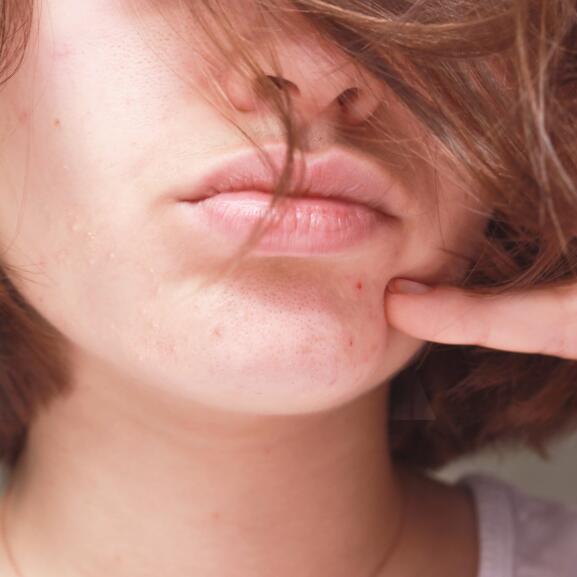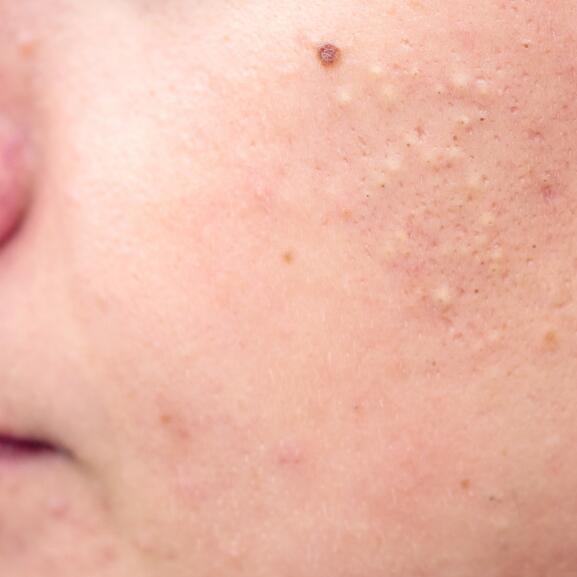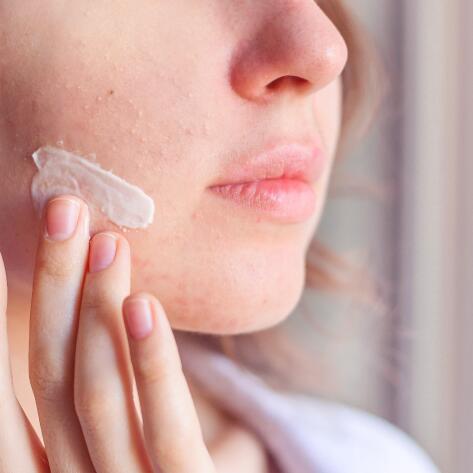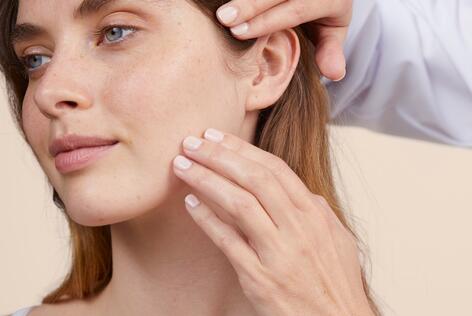Recognising retentional acne
Recognising retentional acne
Oily-prone skin: this is the preferred terrain for "small" skin problems such as blackheads and microcysts, signs of retentional acne. To keep these lesions superficial and avoid inflammation, follow this guide!

What is retentional acne?
This is generally the form in which it appears on the face of teenagers: micro-cysts and blackheads result from the overproduction of sebum caused by the hormonal upheaval of puberty.
But why do they form? Because the sebum, which is thicker and produced in greater quantities, cannot flow through the pores, the small holes that serve to flush it out, which end up becoming blocked. This accumulation of sebum is conducive to the formation of these relatively superficial lesions on the nose, forehead, cheeks and chin, both in girls and boys.
Retentional acne: microcysts or blackheads, what’s the difference?
Microcysts and blackheads are the two main manifestations of retentional acne.
Microcysts (or closed comedones)
A microcyst is the result of a process that begins with oily skin. The next step is the formation of a microcomedo: the sebum produced in excess thickens and changes, and then forms into a kind of horn that clogs the pores. At this stage, the micro-lesion goes unnoticed but the sebum that accumulates on the surface ends up giving it a white appearance. This is called a closed comedo.
Blackheads (or open comedones)
There are also open comedones, also known as blackheads. This colour is due to the oxidation of the sebum in contact with the air. Like microcysts, blackheads can either disappear spontaneously or become inflamed. It is therefore important to act at this stage.
How do I take care of my acne-prone skin?
If you notice the appearance of microcysts or blackheads or both on your face at the same time, what should you do?
The first step is choosing your daily hygiene products carefully. For cleansing, micellar water or a gentle, soap-free cleansing gel will help reduce excess sebum and mattify your skin without stripping it. A routine to adopt morning and evening, for more effectiveness.
The moisturising step is also very important, even if your skin is oily. In fact, insufficiently moisturised skin reacts by producing more sebum. Choose a light, non-greasy, mattifying, anti-blemish and non-comedogenic cream. And no more than twice a week, you can apply an exfoliating mask with cleansing and absorbing properties.
If you treat your retentional acne with dermatological treatments, be aware that some of them can dry out the skin. You'll need to switch to daily skin care products specially formulated for skin that has been dried out by acne treatments.
Routine for adult acne-prone skin

FRIENDLY (AND EXPERT) ADVICE
Why is it important to treat retentional acne right away?
Whether open or closed, a blackhead is the ideal environment for the Cutibacterium Acnes bacteria to proliferate. The next step is the development of papules (large, hard, red pimples) and pustules (these pimples contain a purulent fluid). The acne is now inflammatory.
It’s therefore ideal to treat it beforehand. How? Some innovative skin care products target acne at the micro blackhead stage. When this type of treatment is applied, existing micro-comedones are treated and new ones are prevented from appearing.
The right steps for retentional acne
Even though it can be very tempting to pop blackheads or whiteheads, it’s better not to touch them. The risk is inflammation and acne that is more difficult to treat. Using anti-blemish and non-comedogenic products that are adapted to your skin type will be more effective in keeping your acne superficial.

Our solutions for taking care of retentional acne
Eau Thermale Avène skincare products designed to reconcile you with your skin
- Avène Thermal Spring Water Spray
Thermal Spring Water
Avène Thermal Spring Water SpraySoothes - Restores the skin barrier - Calms
NEWSLETTER
We’re always here for your skin!
All our tips for taking care of your skin day to day.

Which skin care routine should you adopt?
Identify what it really needs with the help of our experts and discover the most suitable skin care routine for you.

